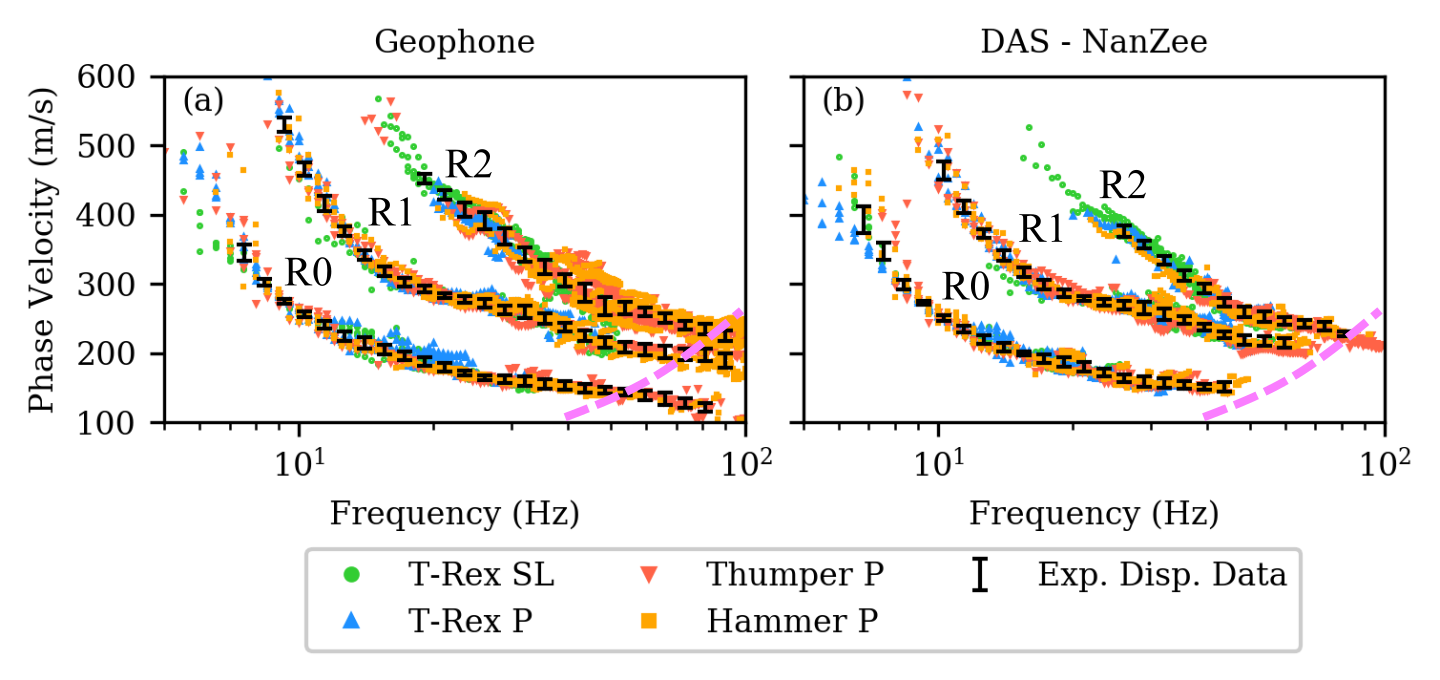
Effectiveness of Distributed Acoustic Sensing for Acquiring Surface Wave Dispersion Data using Multichannel Analysis of Surface Waves
Distributed acoustic sensing (DAS) is a rapidly expanding tool to sense vibrations and system deformations in many engineering applications. In terms of site characterization, DAS presents the ability to make static and dynamic strain measurements on a scale (e.g., kilometers), density (e.g., meter-scale), and fidelity (e.g., microstrain) that was previously unattainable with traditional measurement technologies. In this study, we assess the effectiveness of using DAS to extract surface wave dispersion data using the multichannel analysis of surface waves (MASW) technique. We utilized both highly-controlled, broadband vibroseis shaker truck and more-variable, narrow-band sledgehammer sources to ex-cite the near surface and compared the DAS-derived dispersion data directly with concurrently acquired traditional geophone-derived dispersion data. We report that the differences between the two sensing approaches are minimal and well within the uncertainty bounds associated with each individual measurement for the following DAS testing conditions: (a) a tight-buffered or strain-sensing fiber optic cable is used, (b) the cable is buried in a shallow trench to enhance coupling, and (c) short gauge lengths and small channel separations are used. Our deployed conditions are more promising than previous attempts documented in the literature, thereby demonstrating that DAS can provide accurate measurements of sur-face wave dispersion data of the same quality as geophones. We show that frequency-dependent normalization of the dispersion image removes the effects of scaling, integration, and differentiation of the measured data, thereby removing the need to post-process the geophone-derived and DAS-derived waveforms into equivalent units before performing dispersion processing. Finally, we summarize the important effect of gauge length on the dispersion data for future reference. This study demonstrates that DAS, when appropriate considerations are made, can be used in-lieu of traditional sensors (i.e., geophones) for making high-quality measurements of surface wave dispersion data using the MASW technique.
Vantasseletal2022.pdf
